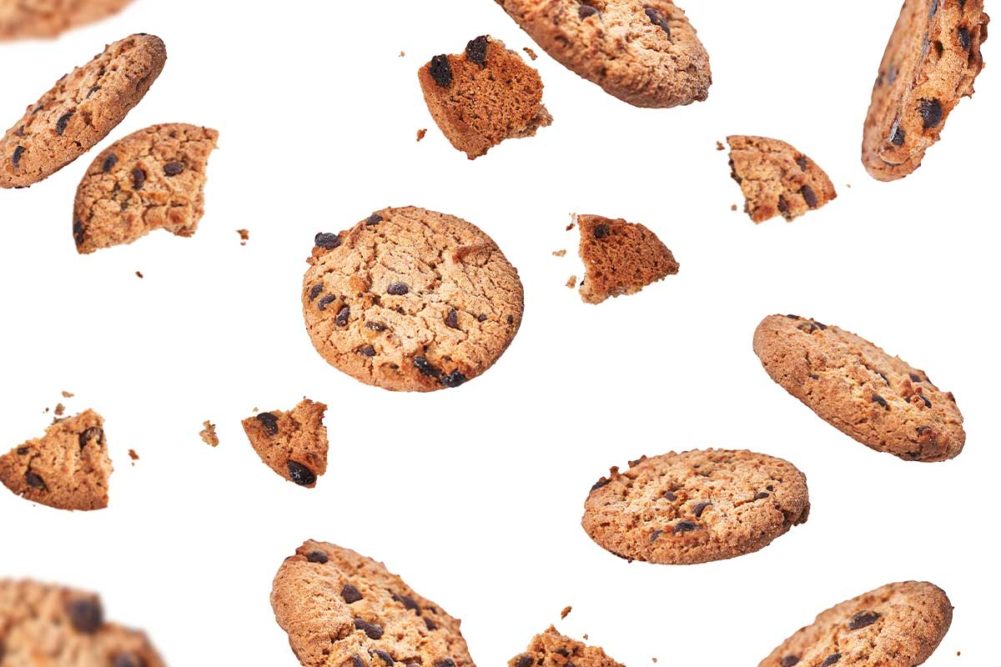When it comes to a chocolate chip cookie, people can be very opinionated about the texture they’re expecting. Some are diehard soft, chewy cookie consumers while others want something thin and crispy. And while you wouldn’t want a soft, chewy cracker, the crispier the cracker, the more control a baker wants out of their processing line.
“Whether you’re trying to get something crispy or crunchy, all four areas come into play and need to be synchronized optimally: formulation, mixing, forming and baking,” said Ken Zvoncheck, director, process technology at Reading Bakery Systems (RBS). “Any deficiencies in any of those areas can lead to a substandard product.”
As Zvoncheck pointed out, a cookie or cracker production line needs to be optimized from start to finish. Start with an inconsistent dough and the baker will be left with inconsistent finished product. Consistency comes with controls from the mixer to forming to the oven.
“You can add consistency by reducing the potential for human error by controlling time and temperature from mixing to the depositing, accurate product weight control for cookies or consistent sheet thickness for crackers, and a well-maintained oven for an even bake,” said Brad Hogan, technical sales manager, Bühler Inc.
From formulation to the end of the line, every step counts for the crispiest cookies and crunchiest crackers.
First things first, no matter the operation, the dough coming out of the mixer has to be good quality. No amount of process optimization will fix a bad dough.
“I always look at the entire process from beginning to end,” Zvoncheck said. “Any problem at the beginning is going to carry through to the very end, so we have to be diligent throughout the entire process.”
This starts with the ingredients being added to the mixer. For crispy cookies, Hogan noted it will all come down to gluten, which is dependent on the flour protein content and the mixing time.
“For cookies, it’s important to control the gluten development by using the correct flour strength, or protein level, and not overmixing the dough,” he said. “Too much gluten will increase the structure and may prevent the required spread.”
Hogan recommended a higher protein flour to aid in crisping and browning paired with an appropriate mix time to control gluten development and dough temperature.
For cracker doughs, bakers definitely want to keep gluten development under control in the mixing bowl.
“It’s important to mix the dough and not knead it too much so that the gluten structure hardly develops,” said Werner Koetz, master baker and baking specialist at Koenig Bakery Systems. “Cracker dough is a short crust dough so it is better to slowly mix the dough for a rather long time.”
Using the correct leavening agent will also help with cookie spread in the oven. He also suggested using a high percentage of low-moisture granulated white sugar.
“The sugars will become liquid during baking,” Hogan said. “Then as they cool and harden, the shells will become crispy.”
Having the right ingredients and percentages is key in mixing, but Zvoncheck noted that even the sequence of adding these ingredients into the mixer needs to be optimized. This can be a certain order of adding ingredients or even how many ingredients are added at each stage.
If a cracker dough needs to ferment before forming, the rest time and environment needs to be controlled.
“Variability in these areas will give you variability in the process,” Zvoncheck said.
Automation is key when reducing variability, which ultimately helps bakers control waste. Recipe control and automated ingredient handling goes a long way here.
“This minimizes or can eliminate human error that can result in bad batches and ingredient waste and helps with dough mixes being consistent and uniform,” said Jessica Davis, account manager, baked products and food extrusion, Baker Perkins. “Having a continuous and automated dough feed system from the mixer to the forming equipment promotes uniform and consistent weights which also prevents waste from under- or overweight finished cookies or crackers.”
Lipika Mandal, food technologist, Spooner Vicars, a Middleby Bakery company, noted that automation allows for a level of control unattainable by human labor, but it must be set up properly.
“Regulated mixing, dough temperature and a controlled environment are critical,” she said. “If you don’t have proper control and procedures on those things, that can lead to a lot of inefficiencies and hence increase wastages. Make sure the HMI is set up to run the production line with the proper speeds, roller gaps, feedback systems, links to upstream and downstream equipment, controls for flour dusters, depositors and all other components on the line.”
This article is an excerpt from the March 2024 issue of Baking & Snack. To read the entire feature on Cookie & Cracker Processing, click here.






